D’ARCY Brimson flickers a fire into life with a flint. We’re out on the rocks below Guernsey’s Fort Grey Shipwreck Museum on Roquaine Bay. All around is seaweed that forager D’Arcy and his partner Tara put to any number of culinary uses but our immediate aim is to boil up some rock samphire, drain and serve with a pat of that deep yellow butter that sings of the dairy riches of this beautiful Channel Island.
Alongside cubeb berry, nutmeg and juniper expect a scent of the island’s gorse flowers
Food For Free was Richard Mabey’s groundbreaking 1972 book and it’s still the forager’s bible. Walking the couple’s organic farm we pluck yarrow and pennyroyal, wild fennel and plantain. Take yarrow. When young sons Hugo and Humphrey sting themselves on nettles (edible, too) they rub on yarrow – better than dock leaves. Ancient Greek hero Achilles used it to staunch the wounds of his troops.
There’s such lore aplenty if you book in for a course with the Brimsons’ Wild Guernsey project with ‘wild camping’ available on the farm in the summer months. You could get a taster at the first Guernsey International Food Festival, which runs from September 18-27. Among Wild Guernsey’s special offers is a ‘Fire and forage workshop’ for £20 for two hours per person (making a fire, finding wild food and sampling wild treats).
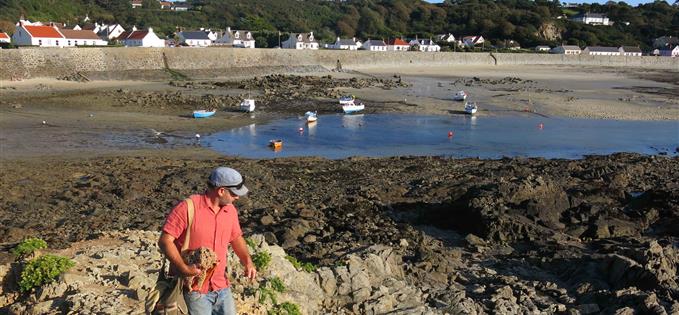 In search of samphire; at Fort Grey, below
In search of samphire; at Fort Grey, below
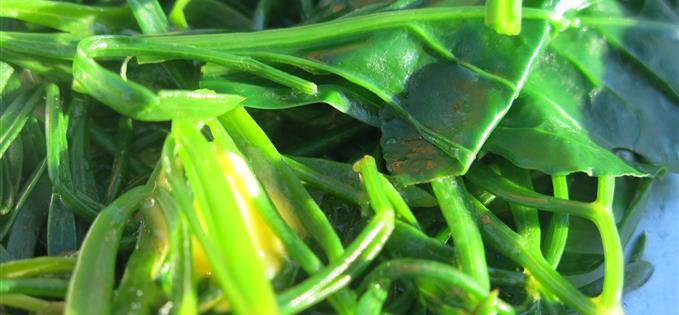
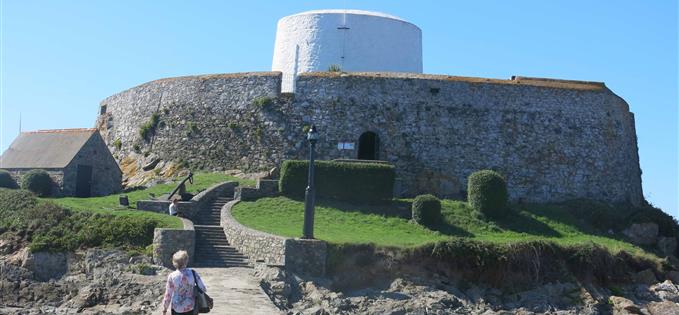
The festival is a canny blend of such home-grown foodie delights – a Guernsey Gourmet Bus Tour on September 26 sounds the perfect introduction – while living up to its international billing with star guests such as Prue ‘Great British Menu’ Leith (one of several tie-ins with the concurrent Literary Festival) and intriguingly named top Dutch chef Bas Oonk.
Of course, you don’t need a festival to sample the food treasures of the island. It may lack the Michelin clout of old rival Jersey, which boasts four establishments with stars, but it offers a consistently high level of casual places to eat. The two islands share a one of the great showcases each October and November – Tennerfest.
It began 18 years ago as a way of attracting customers into island restaurants in quieter months with a £10 three course menu. These days it offers gourmet menus for £10-£20, starring the likes of local scallops and lobsters but over a third of the meals still come in at a tenner. Some 75 eateries – a record number – took part in Guernsey alone last year.
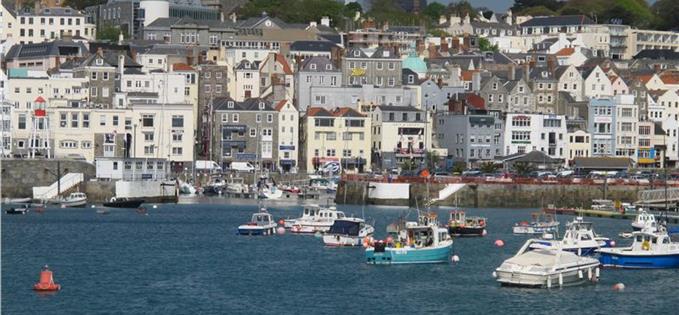 St Peter Port from the sea; below. stunning views from every corner
St Peter Port from the sea; below. stunning views from every corner

The places where I ate on my recent visit were proud of their local sourcing. At La Fregate, a hotel restaurant with stupendous views of capital St Peter Port’s harbour I enjoyed oysters from Roquaine Bay (again) and in Pier 17, at the heart of that harbour a main superb main of brill cooked with capers, spring onions and lemon butter after a starter of Guernsey scallops (OK, in a classic combo with black pudding from faraway Stornoway!). Other places in St Peter Port that come highly recommended include the Italian Da Nello, which displays the day’s catch on a blackboard outside, Mora on The Quay, owned by the Da Nello and offering tapas in its brasserie, and grill and cocktail specialists Red.
 Duke of Richmond
Duke of RichmondStill the best meal I ate on the holiday was in my base, the four-star Duke of Richmond, set in one of St Peter Port’s chicest districts, up near Candie Gardens, home to the excellent Guernsey Museum and Art Gallery. The hotel’s decor owes much to the influence of its South African owners, notably the Leopard Bar and Restaurant, where I ate a terrific tranche of turbot with garlic sauce in a dinner accompanied by benchmark chardonnays from their associate, Cape producer Bouchard Finlayson.
The Duke and its sister hotel, Old Government House, Guernsey’s only five-star are part of the Red Carnation group, which also runs some of London’s finest hotels. Old Government House is just that. It was built in 1796 as the residence for the governor of Guernsey and the Bailiwick of Herm, Sark and Alderney, but by 1858 had been sold to become a hotel, which it has remained since, except for 1941-45 when the Nazi occupiers used it as their HQ. Very much a town mansion, it retains an imperial ambience, even hosting a bijou curry restaurant with a real Raj feel.


I popped into the hotel’s Crown Club bar, invited to try a sinus-clearing shot of horseradish vodka – perfect for Bloody Marys – from Haut Maison, a farmhouse-based local producer of excellent fruit liqueurs and flavoured vodkas. Guernsey has also caught on to the rage for botanical-rich artisan gins – Blue Bottle Single Batch from St Sampson in the north of the island the real deal. Alongside cubeb berry, nutmeg and juniper expect a scent of the island’s gorse flowers. Award-winning and available from the duty-free at Guernsey Airport.
St Sampson is also home to the two-year-old White Rock microbrewery, a welcome alternative to the long-established Randall’s. Check out its Wonky Donkey best bitter and hoppy Lost Tourist at St Peter Port’s best pub, the Cornerstone Cafe Bar on the way up to visiting the Victor Hugo House (of which more later).
Guernsey often feels like an open larder, especially on the Ruettes Tranquilles, a network of country lanes where priority is given to walkers, cyclists and horse riders, with a 15mph speed limit.
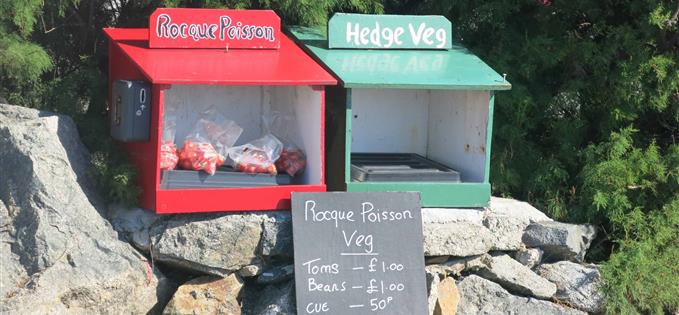

Most beaches have huts selling crab sandwiches, rich Guernsey ice cream or buttered gache, a local fruit loaf and you can buy fresh flowers, fruit and veg from one of the ubiquitous roadside hedge stalls, complete with “honesty box”. Torteval Cheeses from the parish of that name produce an excellent blue called Fort Grey, available at the capital’s best deli, Tapenade on The Quay. If coastal foraging is your thing go in quest of a local delicacy, the ormer, an abalone-like shellfish collected from under rocks at low tide only at certain specified times of the year.
 Farmer's Market at Sausmarez Manor
Farmer's Market at Sausmarez ManorThe best farmer’s market is at the must-visit Sausmarez Manor, in St Martin’s parish, which manages to retain its quirky charm while offering a range of small-scale tourist attractions such radio-controlled boats on the lake, pitch and putt, an Edwardian copper and tinsmith in the tea-rooms... and a weekly ghost tour, led by the Seigneur of the Manor himself, Peter de Sausmarez.
 Cobo beach to myself
Cobo beach to myselfRead about haunted Sausmarez, a visit to offshore Herm, the remarkable cannon salute ritual of Cornet Castle and the legacy of the German occupation during World War II, in Guernsey, Ghosts and A Fruitcake Called Gache about a previous visit I made to the island.
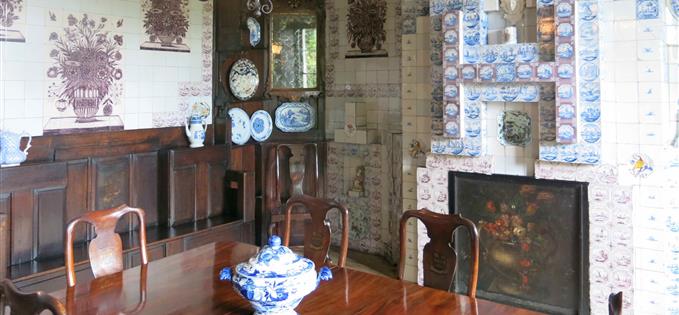 Victor Hugo's house is distinctively decorated
Victor Hugo's house is distinctively decorated


On that trip I missed a tour around Hauteville House, Victor Hugo’s hilltop home. How ‘miserable’ ‘that made me. This time I made it and thoroughly enjoyed the exiled French writer’s eccentric sideline as interior decorator. Hugo spent 15 years between 1856 and 1870. Run by the city of Paris as a museum to the great man, its white seaside villa exterior belies an interior showcasing his love of recycling and over the-top decoration, including his gothic church inspired ‘death room’ (he eventually died back in Paris).
His wife was allowed a room of her own on the side of the house that overlooked the street where Hugo’s mistress lived. He slept and wrote in a top floor den (main picture) with panoramic views of Castle Cornet, the shipping lanes and, far away, the beloved France he was forced to quit for political reasons.
 Moulin Huet; below, as seen by Renoir; and Petit Port beach
Moulin Huet; below, as seen by Renoir; and Petit Port beach


I slipped away from Hauteville, spent a few minutes in La Vallette Underground Military Museum, cluttered nirvana for fans of Nazi collectibles but less than enlightening, before re-emerging into the sunshine and taking the clifftop walk south to Fermain Bay with its admired beach cafe and Jerbourg Point (mussels and Jersey-brewed Liberation pale in its white hotel overlooking the sea), then down the 270 steps to to glorious Pied Port beach. I toiled to get back up before finishing the four hour walk at Moulin Huet Bay. Its grotesque rock formations captivated Auguste Renoir, who captured them on canvas.
I was captivated, too, by this spectacular south east corner, offering some of the best coastal walking in Europe. My guide was a handy free booklet available everywhere called Tasty Walks Guernsey, suggesting 15 self-guided trails with tips for where to eat along the way. Now I wonder if the Moulin Huet Beach Cafe will do me a crab sandwich?
Fact file
The Guernsey Food Festival runs from September 18-27.
For more information on Guernsey visit: www.visitguernsey.com
Return flights from Manchester to Guernsey cost from £110 with Aurigny.
Overnight stays at the four star Duke of Richmond hotel cost from £148. View from my fourth floor room below.
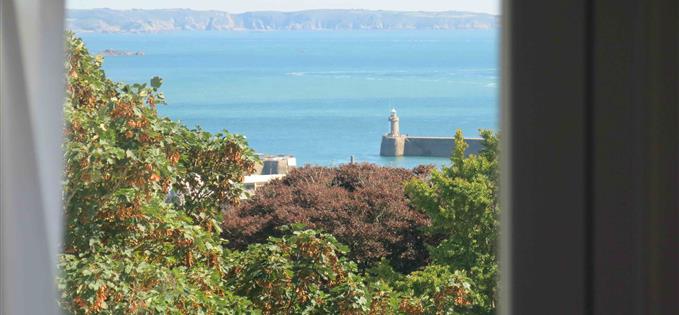 View from my bedroom
View from my bedroomGetting around Guernsey by public transport is cheap and easy with fares from £1. Roads are narrow and traffic surprisingly heavy, St Peter Port is a one-way nightmare with parking at a premium, but I found my Hertz hire car useful in covering much of the 24.5 square miles of the island in a short stay.
 Guernseys at Le Tricoteur
Guernseys at Le TricoteurMust buy? Why, a traditional hand-finished Guernsey sweater. I bought mine from Le Tricoteur factory shop on Roquaine Bay.

Favourite quirky museum? The Fort Grey Shipwreck Museum, where we came in. Open only April to October, this former bulwark against Napoleonic invasion now houses a collection of salvaged objects. It’s a sobering reminder of how cruel these beautiful coasts have been.





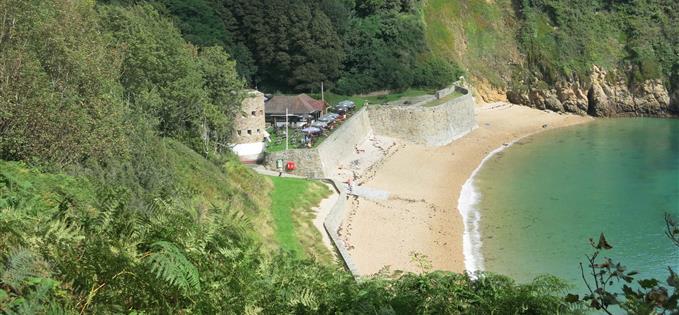
 I taste foraged rock samphire and it's delicious
I taste foraged rock samphire and it's delicious











